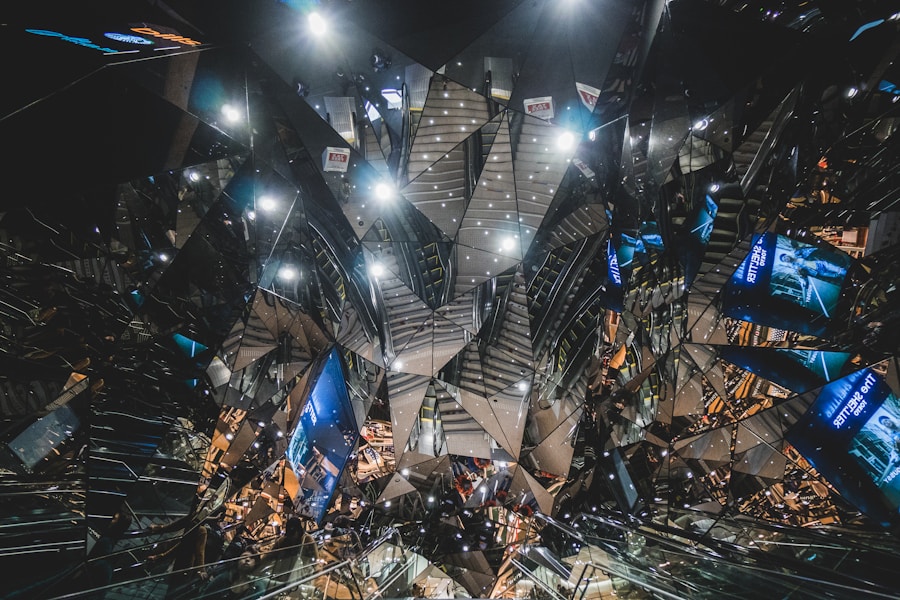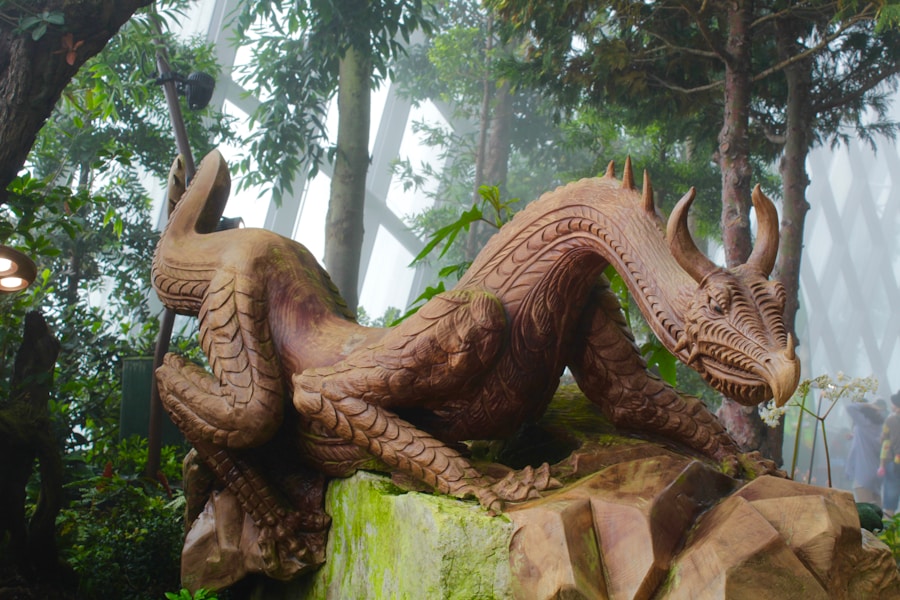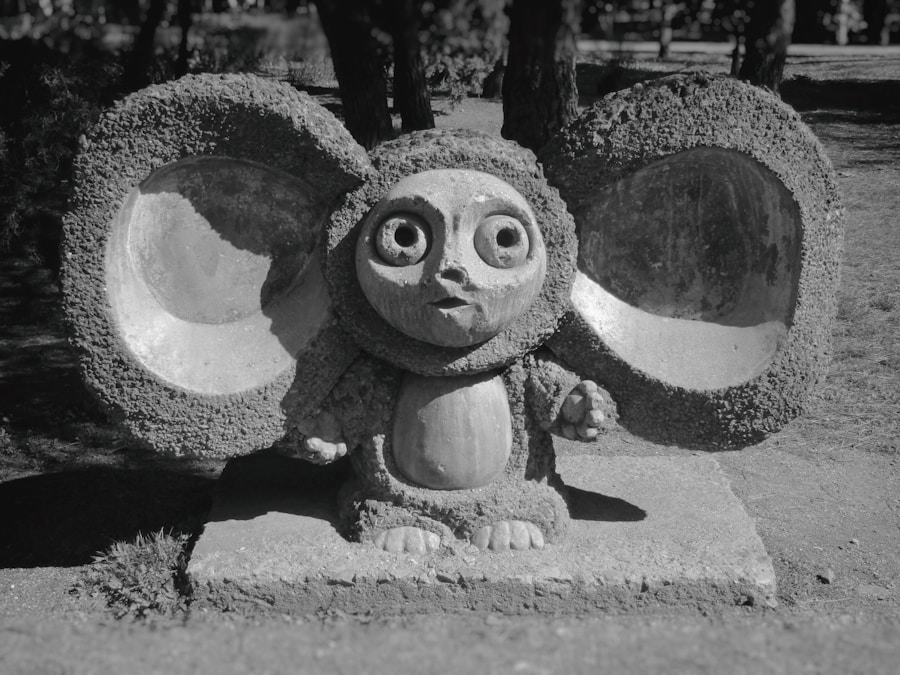Kaiju, the Japanese term for “strange beast,” has captivated audiences worldwide with its towering monsters and epic battles. These colossal creatures, often depicted in films, comics, and video games, serve as more than just entertainment; they reflect societal values, fears, and aspirations. As you delve into the world of kaiju, you may notice that gender dynamics play a significant role in shaping these narratives.
The portrayal of male and female kaiju often mirrors cultural attitudes toward gender, revealing underlying themes of power, vulnerability, and identity. In the realm of kaiju, traditional gender roles have been both reinforced and challenged. While many kaiju films feature male monsters as the dominant forces, female kaiju like Mothra and Biollante have emerged as powerful symbols of femininity and resistance.
By examining these characters and their evolution, you can gain insight into how gender dynamics in kaiju narratives have shifted over time. This exploration not only highlights the complexities of gender representation but also invites you to consider how these portrayals resonate with contemporary discussions about gender in society.
Key Takeaways
- Kaiju films have long been a reflection of societal gender dynamics, with the representation of femininity and masculinity evolving over time.
- Mothra has evolved as a feminine kaiju, representing nurturing and protective qualities traditionally associated with women.
- Biollante challenges traditional gender norms in kaiju by embodying both feminine and monstrous characteristics, blurring the lines of gender representation.
- Society plays a significant role in shaping the gender dynamics of kaiju, with cultural attitudes and values influencing the portrayal of kaiju characters.
- The representation of femininity and masculinity in kaiju films has evolved over time, reflecting changing societal perceptions of gender roles and identities.
Mothra: The Evolution of a Feminine Kaiju
Mothra first graced the silver screen in 1961, quickly establishing herself as a beloved figure in the kaiju genre. Unlike her male counterparts, Mothra embodies a nurturing spirit, often depicted as a protector of humanity and nature. Her evolution from a simple giant moth to a multifaceted character reflects changing perceptions of femininity in popular culture.
You may find it fascinating that Mothra’s narrative often revolves around themes of motherhood and sacrifice, positioning her as a guardian rather than a destroyer. As you explore Mothra’s character further, you’ll notice that she is often accompanied by the Shobijin, twin fairies who serve as her voice and guides. This unique relationship emphasizes the importance of collaboration and support among women, challenging the notion that female characters must exist in isolation.
Mothra’s ability to communicate with humans and her willingness to engage in diplomacy rather than violence set her apart from many male kaiju. This portrayal not only humanizes her but also invites viewers to reconsider traditional gender roles within the kaiju genre.
Biollante: Challenging Traditional Gender Norms in Kaiju

Biollante, introduced in 1989’s “Godzilla vs. Biollante,” represents a radical departure from conventional depictions of female kaiju. Born from the genetic material of Godzilla and a human woman, Biollante embodies a complex fusion of femininity and monstrosity.
Her very existence challenges the binary understanding of gender, as she is neither wholly female nor male but rather an amalgamation of both. This complexity invites you to reflect on the fluidity of gender identity and the ways in which it can be represented in media. Biollante’s design is strikingly unique; she is a massive plant-like creature with a face that evokes both beauty and terror.
This duality serves as a metaphor for the multifaceted nature of femininity itself. In many ways, Biollante embodies the struggle against patriarchal oppression, as her creation stems from a desire to control nature and manipulate life itself. As you consider her narrative arc, you’ll see that Biollante’s ultimate fate is tied to themes of environmentalism and the consequences of human hubris.
This connection elevates her character beyond mere monster status, positioning her as a symbol of resistance against exploitation.
The Influence of Society on the Gender Dynamics of Kaiju
| Aspect | Impact |
|---|---|
| Representation in Media | Only 31% of kaiju films feature female kaiju, reflecting societal gender biases. |
| Toy Merchandising | Male kaiju toys outsell female kaiju toys by a ratio of 3:1, perpetuating gender stereotypes. |
| Fan Community | Online forums and fan art predominantly focus on male kaiju, marginalizing female kaiju fans. |
| Leadership Roles | Only 15% of kaiju films feature female kaiju in leadership or protagonist roles, reinforcing gender inequality. |
The portrayal of gender dynamics in kaiju films is deeply intertwined with societal attitudes toward gender roles at the time of their creation. As you examine various films across decades, you’ll notice that shifts in cultural norms have influenced how male and female kaiju are depicted. For instance, during the post-war era in Japan, male kaiju often represented national strength and resilience in the face of adversity.
In contrast, female kaiju like Mothra emerged as symbols of hope and nurturing during times of uncertainty. In contemporary society, discussions surrounding gender equality and representation have prompted filmmakers to reevaluate traditional narratives. You may observe that recent kaiju films are increasingly incorporating strong female characters who challenge stereotypes and assert their agency.
This evolution reflects broader societal changes, as audiences demand more nuanced portrayals of gender that resonate with their own experiences. By analyzing these shifts, you can gain a deeper understanding of how kaiju narratives serve as a mirror to societal values and expectations.
The Evolution of Gender Dynamics in Kaiju Films Over Time
As you journey through the history of kaiju films, you’ll witness a remarkable evolution in gender dynamics. Early films often relegated female characters to supporting roles or romantic interests, while male kaiju dominated the screen with their brute strength. However, as societal attitudes began to shift in the late 20th century, filmmakers started to explore more complex representations of gender.
In recent years, you may have noticed an increasing emphasis on female empowerment within kaiju narratives. Films like “Kong: Skull Island” and “Godzilla vs. Kong” feature strong female characters who play pivotal roles in the storylines.
These characters are not merely sidekicks; they are integral to the plot’s progression and often exhibit qualities traditionally associated with masculinity—courage, intelligence, and leadership. This shift reflects a growing recognition that women can be just as formidable as their male counterparts, challenging long-held stereotypes within the genre.
Mothra and Biollante: Representations of Femininity and Masculinity in Kaiju

Mothra and Biollante serve as compelling representations of femininity within the kaiju genre, each embodying different aspects of what it means to be female in a world dominated by monstrous beings. Mothra’s nurturing qualities highlight the importance of compassion and cooperation, while Biollante’s fierce independence challenges traditional notions of femininity by embracing strength and complexity. As you analyze these characters side by side, you’ll find that they offer contrasting yet complementary perspectives on gender.
Mothra’s role as a protector aligns with traditional feminine ideals, emphasizing care for others and harmony with nature. In contrast, Biollante’s existence as a hybrid creature blurs the lines between femininity and monstrosity, suggesting that strength can coexist with vulnerability. This duality invites you to reconsider how femininity is portrayed in media—no longer confined to passive roles but instead embracing a spectrum that includes power and agency.
The Impact of Mothra and Biollante on Gender Representation in Kaiju Culture
The influence of Mothra and Biollante extends beyond their individual narratives; they have significantly shaped gender representation within kaiju culture as a whole. Mothra’s enduring popularity has established her as an icon of feminine strength, inspiring countless adaptations and merchandise that celebrate her legacy. You may find it interesting that she has become a symbol not only for fans of kaiju but also for feminist movements seeking to reclaim narratives around female power.
Biollante’s unique design and backstory have also left an indelible mark on the genre. By challenging traditional gender norms, she has opened doors for more diverse representations of female monsters in subsequent films. As you explore newer titles within the kaiju genre, you’ll likely encounter characters inspired by Biollante’s complexity—creatures that defy easy categorization and invite audiences to engage with themes of identity and transformation.
The Continued Evolution of Gender Dynamics in Kaiju
As you reflect on the evolution of gender dynamics within kaiju films, it’s clear that these narratives are far from static; they are continually shaped by societal changes and cultural conversations surrounding gender representation. Mothra and Biollante stand as testaments to this evolution—each character embodying different facets of femininity while challenging traditional norms. The ongoing dialogue about gender in kaiju culture invites you to consider how these portrayals resonate with your own experiences and beliefs about identity.
As filmmakers continue to push boundaries and explore new narratives, you can anticipate even more diverse representations that reflect the complexities of modern society. The world of kaiju is not just about monsters battling for supremacy; it is also about understanding ourselves through the lens of these extraordinary beings—an exploration that will undoubtedly continue to evolve for generations to come.
